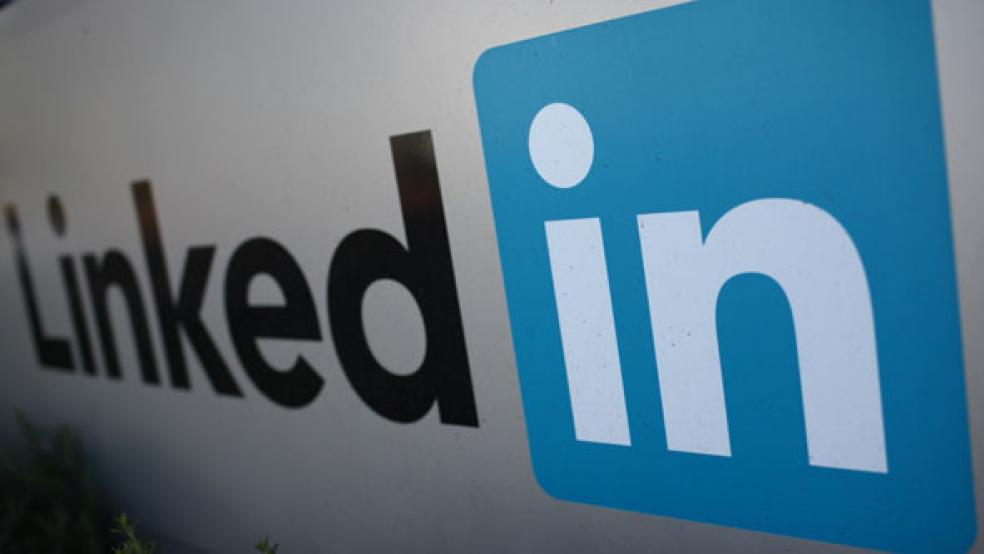LinkedIn sent an early Valentine to investors Thursday, surprising them with outsized earnings and profit margins in the fourth quarter. And now everyone is talking engagement – rising page views, likes, and comments. Things are getting serious. The stock is up 18 percent, and at $147, it’s trading at a lofty 186 times expected earnings per share, a large heaping of love and faith.

LinkedIn has now beaten analysts’ expectations for earnings and revenue seven straight quarters since going public in May 2011, and the stock has tripled over that time. Earlier this year, though, LinkedIn (NASDAQ: LNKD) watchers questioned just how passionate its members were about the professional networking site. They feared that it was just a passing thing, “something you update with your most recent career information and then don’t return to,” as Mike Isaac wrote over at AllThingsD.
If mobile has been Facebook’s (NASDAQ: FB) challenge, then engagement was the torment of LinkedIn. Engagement took center stage in the earnings conference call; in less than an hour, the term came up 25 times (almost blasé, compared to Facebook which dropped the word mobile an almost desperate 80 times).
Facebook also faces issues with engagement, according to a recent Pew Research Center study that revealed pervasive burnout on the giant social network. But LinkedIn engagement issues may be deeper; users don’t need to check in regularly to see whether they are missing a party or to stay on top of family news. And the numbers beneath the surface were beginning to suggest a rift was forming. Page views began to erode earlier in 2012 -- even as the number of users continued to grow -- edging down from 9.4 billion in the first quarter to 9.3 billion in the second and 8.9 billion in the third, according to comScore data.
The drift reversed in the fourth quarter. LinkedIn “membership” grew 30 percent, to 202 million, with a new member every two seconds 64 percent of those joiners from outside the U.S. Users overall stayed true to the service, viewing 9.8 billion pages, a 10 percent sequential jump. That was twice the growth rate in unique visitors, which grew to 116 million. The more intense involvement translated into dollars and cents: fourth-quarter earnings rocketed to 35 cents a share, nearly twice the 19 cents expected in a Bloomberg survey of analysts. Revenue grew to $303.6 million, 8 percent higher than the average prediction.
The earnings were so good, even CEO Jeff Weiner and CFO Steve Sordello said they were surprised. The key to the success was a technology upgrade that enabled LinkedIn to ramp up the rate of new product rollouts. A new homepage “made it a lot easier to find relevant content” -- and boosted views nearly 70 percent. Notifications enabled members to see “social gestures” such as comments or likes. The “People You May Know” feature resulted in an 80 percent increase in invitations . “Endorsements” went viral; users have generated more than 1 billion. Companies have adopted LinkedIn’s “Marketing Solutions” to create deeper bonds with professionals; “Citi's managed group now has more than 100,000 members.” Similarly, LinkedIn Today let big-name businesspeople like Richard Branson (more than 1.3 million followers), GE CEO Jeff Immelt and Mark Cuban, investor and owner of the Dallas Mavericks develop followings for their blogs.
That litany of successes prompted investor love to pour out – in contrast to Facebook, which had a modestly better fourth quarter than many expected, but nonetheless got slammed in the market. A consensus seems to be building that LinkedIn is the grown up in social media. Groupon (NASDAQ: GRPN) and Zynga (NASDAQ: ZNGA) now seem like immature babes. Facebook still has the whiff of adolescence (though Sheryl Sandberg has changed that a great deal) and got ambushed by the surge in mobile users, still difficult to monetize.
LinkedIn made it clear that it is no love-slave to mobile. The Mountain View, Calif., company makes more than half its money from recruiters (up 90 percent in the quarter) and the rest from a mix of advertising and premium subscriptions. And where Zuckerberg was practically hopping up and down on a digital couch to get the message across that Facebook is a mobile company, LinkedIn’s execs were practically coy regarding mobile. In fact, they didn’t even think it was worthwhile to note in the earnings news release that 27 percent of
ts members check in on a mobile app, up from 15 percent a year earlier.All together, it’s no wonder Weiner began the conference call by announcing: “2012 was a transformative year for LinkedIn.” And that transformation has emboldened LinkedIn to announce a price increase for its most important business line: recruiters. After all, Valentine’s is just one day and courtship is year-round and expensive.




